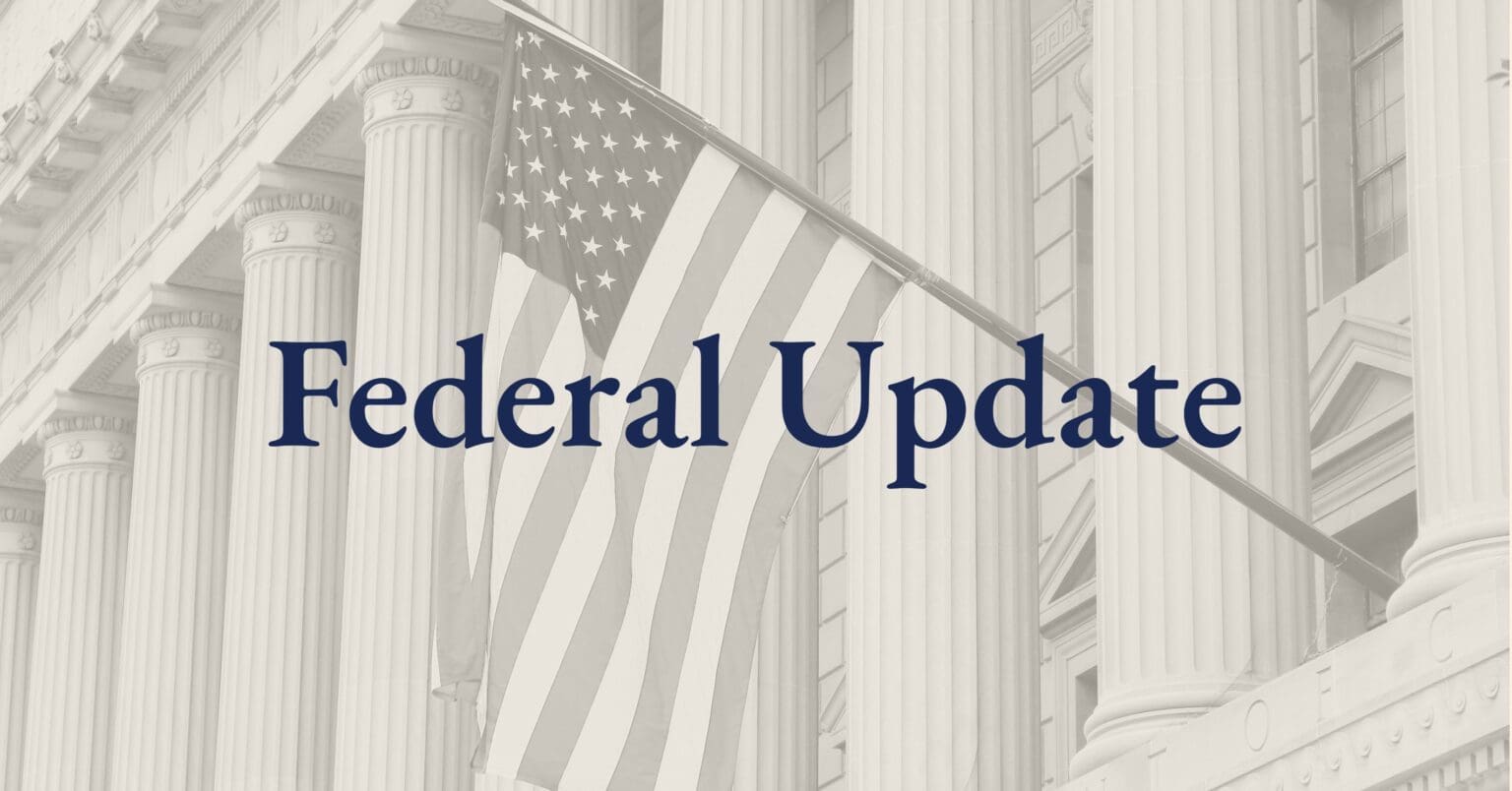Federal Update: Bipartisan Talks Gain Momentum as Key Fiscal Deadlines Approach
Back to News
This week, the Senate once again rejected the House-passed short-term funding bill (H.R. 5371), marking the 13th failed vote to advance the measure. However, there are tentative signs that positions may be softening, offering a faint but notable indication that bipartisan negotiations could soon gain traction.
As the impasse nears the one-month mark, shutdown fatigue is clearly setting in across Capitol Hill. Behind the scenes, discussions among lawmakers have intensified as both chambers explore a framework that could reopen the government as soon as next week. Members of both parties have expressed interest in identifying a path forward that balances short-term funding stability with progress on longer-term fiscal priorities.
A central focus of the ongoing talks is how to advance fiscal year 2026 spending bills. Several appropriators have suggested that moving a package of full-year bills could serve as a show of good faith before the Senate passes a shutdown-ending stopgap spending measure. As of this writing, Senate negotiators are developing a plan that would pair a three-bill appropriations package with a new stopgap measure. A vote on extending expiring Affordable Care Act (ACA) health insurance subsidies may also be part of the broader package.
Under the emerging framework, the first appropriations package would finalize fiscal year 2026 spending levels for the following three bills: Agriculture, Military Construction-Veterans Affairs, and the Legislative Branch. Meanwhile, a potential second package could encompass the Defense and Labor-Health and Human Services measures, as well as potentially the Transportation-Housing and Urban Development and the Commerce–Justice–Science funding bills.
It should be noted that negotiations continue on how to address the expiring ACA subsidies, with some senators proposing the creation of a bipartisan working group to consider the issue in greater depth. While it remains unclear how soon a consensus could be reached, many on Capitol Hill view the coming days as critical to determining whether a broader funding agreement can take shape.
The November 1 “food-aid cliff” is fast approaching, with states warning that they may be forced to pause Supplemental Nutrition Assistance Program (SNAP) benefits absent federal action. On the same day, funding will lapse for many early childhood education programs supported by Head Start, which could lead to payroll delays, reduced operations, or temporary closures. Adding to the pressure, ACA open enrollment also begins on November 1, drawing additional public attention to health care costs and administrative challenges tied to the shutdown.
Despite these mounting pressures, the Senate is set to adjourn today, and the House remains out of session, making it unlikely that a breakthrough will occur before next week. However, many lawmakers view the coming week, which includes several key state elections and fiscal deadlines, as a potential turning point for efforts to reopen the federal government and restore full operations.
November CalFresh Benefits in Jeopardy
A federal judge on Thursday indicated she is likely to order the U.S. Department of Agriculture (USDA) to use a portion of its reserves to partially fund SNAP/CalFresh in November, potentially averting a complete lapse in benefits during the ongoing government shutdown. More than 40 million Americans, including about 5.5 million Californians, rely on SNAP benefits each month. California alone distributes roughly $1 billion in assistance monthly, underscoring the potential impact of any lapse or delay in funding.
Judge Indira Talwani made the statement during a hearing in a lawsuit filed by a coalition of 23 state attorneys general and three governors – which includes California Governor Gavin Newsom and Attorney General Rob Bonta– challenging USDA’s decision not to tap its contingency fund to pay for SNAP benefits next month. The lawsuit argues that withholding the funds violates federal spending laws and would leave millions of households unable to purchase groceries. Without intervention, states will stop receiving federal payments as early as Saturday.
Even with such an order, delays are expected, as states and federal contractors that manage Electronic Benefits Transfer (EBT) systems require several days’ notice before distributing funds.
The court case follows a recent memo from USDA stating that the agency would not use its contingency fund to cover benefits in November, explaining that the reserve is intended only for emergencies such as natural disasters. However, the decision appeared to contradict the agency’s 2025 contingency plan, which had outlined the possible use of those funds in the event of an extended government shutdown.
In Congress, lawmakers have also introduced measures to temporarily restore SNAP funding. Senator Josh Hawley’s (R-MO) Keep SNAP Funded Act (S. 3024) would authorize short-term funding to sustain benefits, though its prospects remain uncertain while the House is out of session.
Legislation Introduced to Protect Watersheds After Wildfires
Last week, Congressman Joe Neguse (D-CO) reintroduced legislation – the Watershed Protection and Forest Recovery Act (H.R. 5823) – that would help communities and water users protect their water supply after natural disasters on U.S. Forest Service (USFS) lands. Among other things, the legislation would create a new Emergency Forest Watershed Program (EFWP) within the Department of Agriculture (USDA) that would help streamline recovery efforts and protect water resources downstream of national forests. It also would allow local governments and water providers to enter into agreements with the Forest Service to implement watershed recovery protection measures.